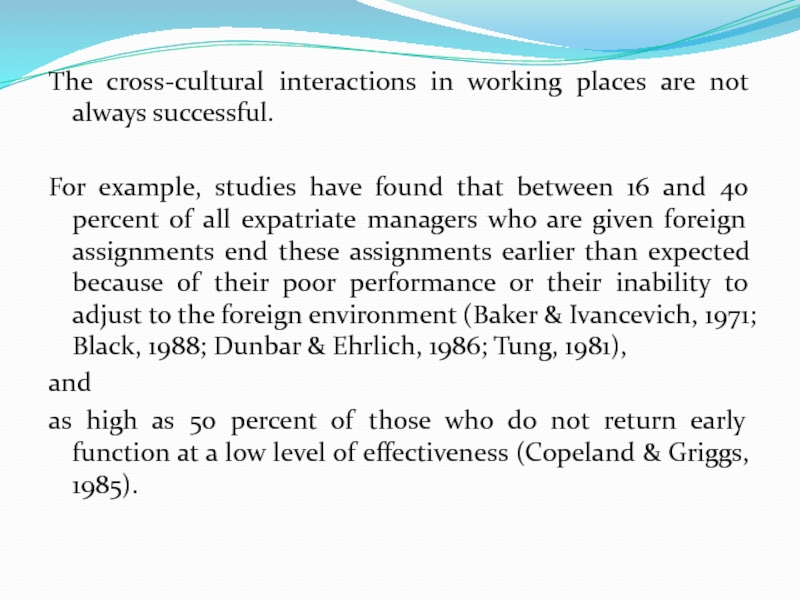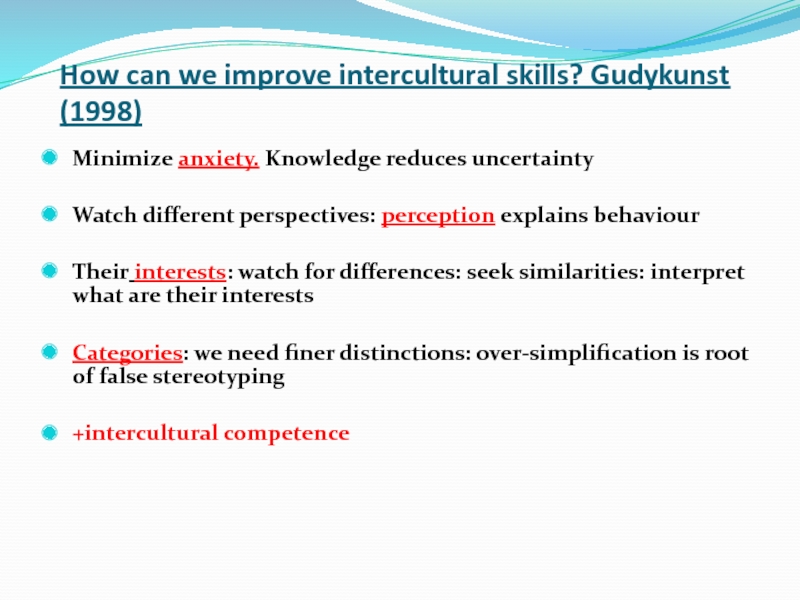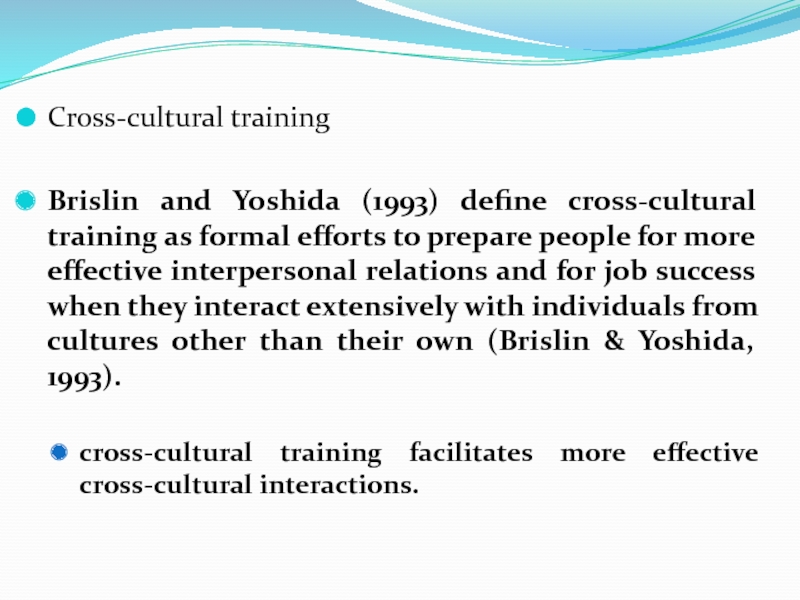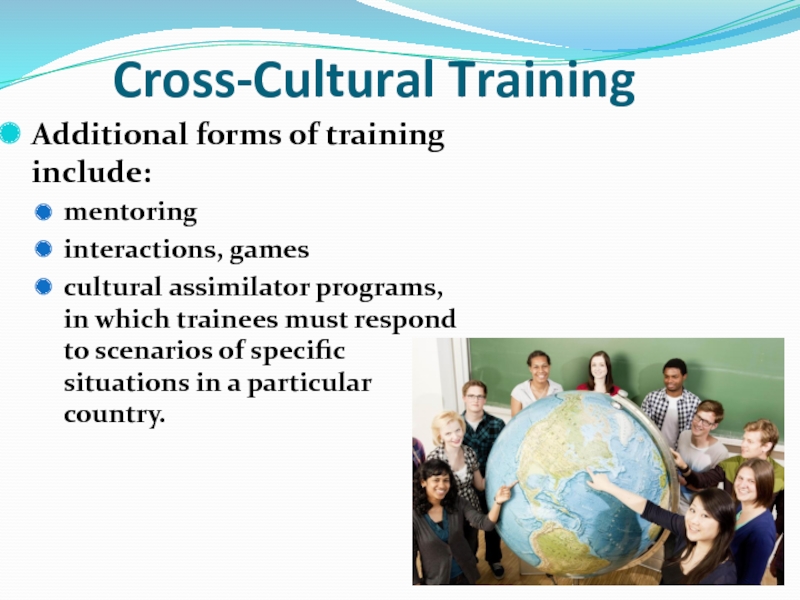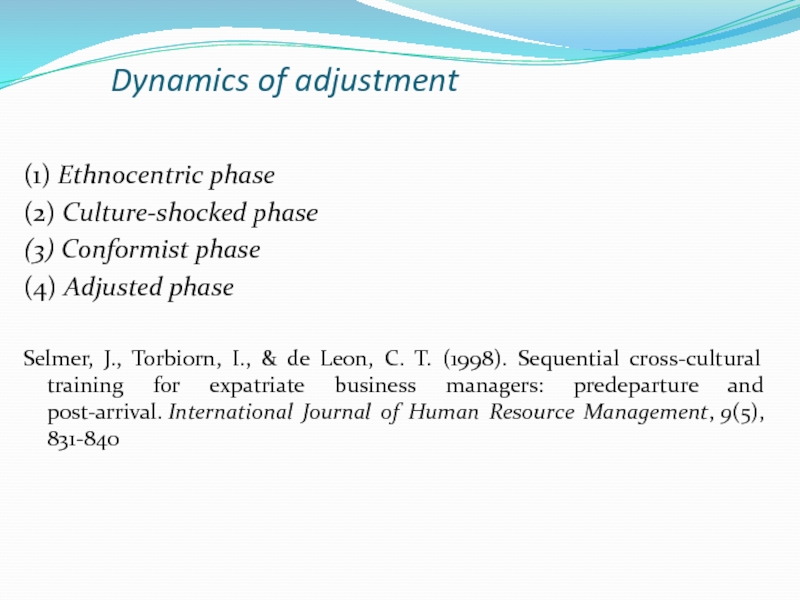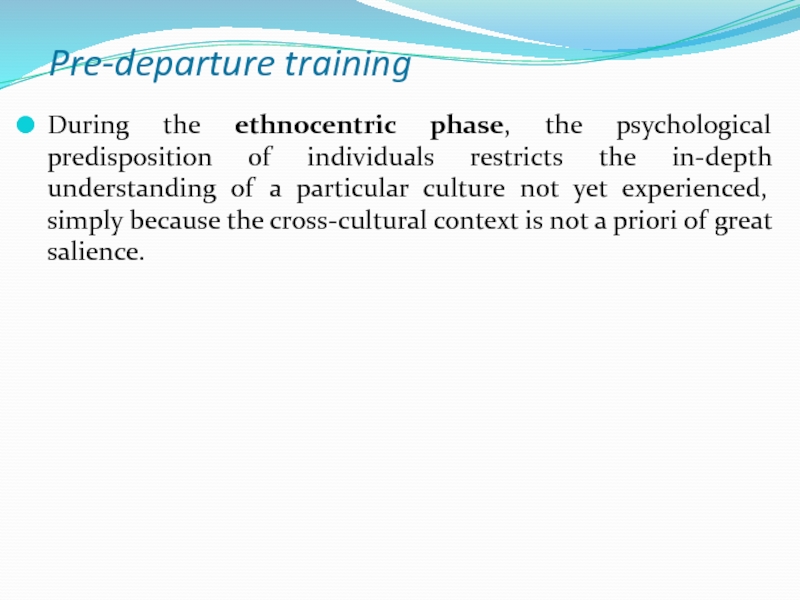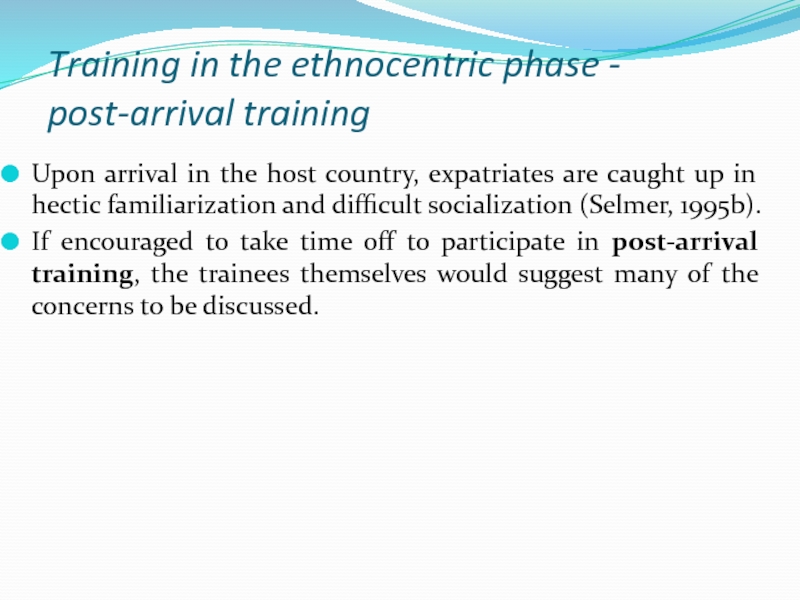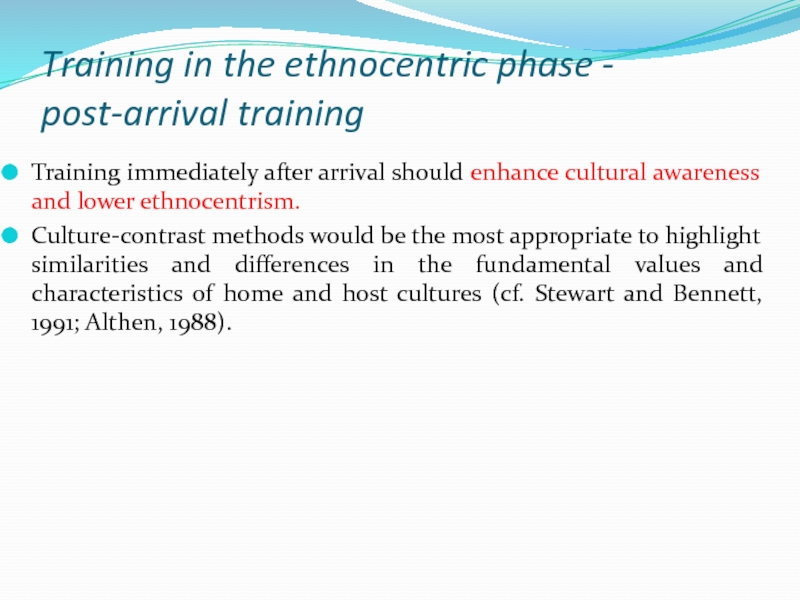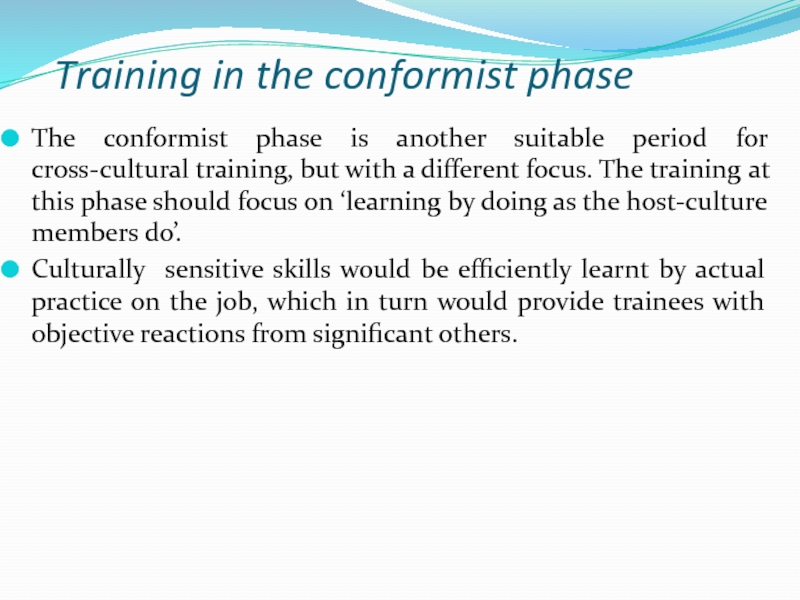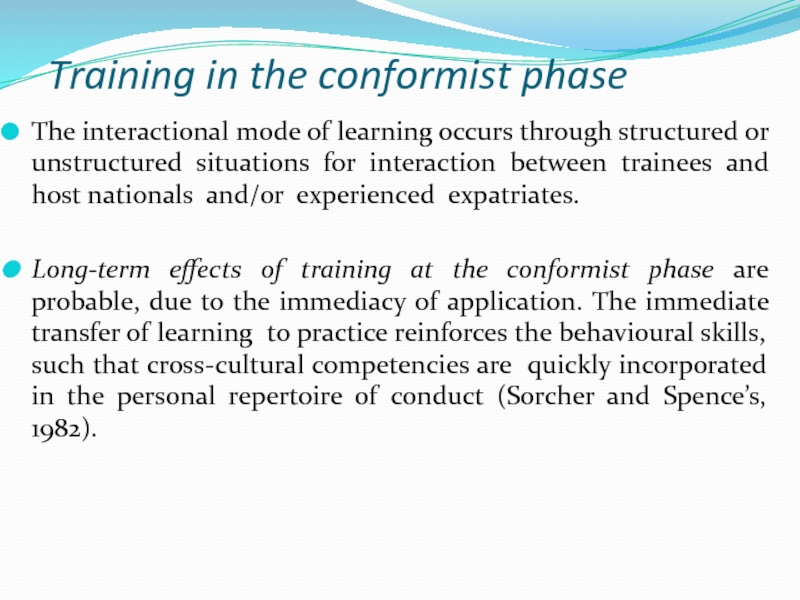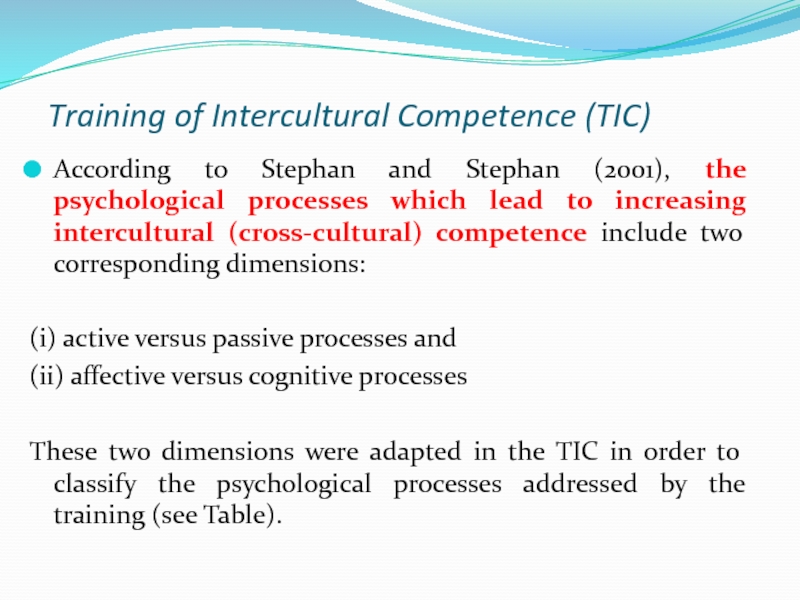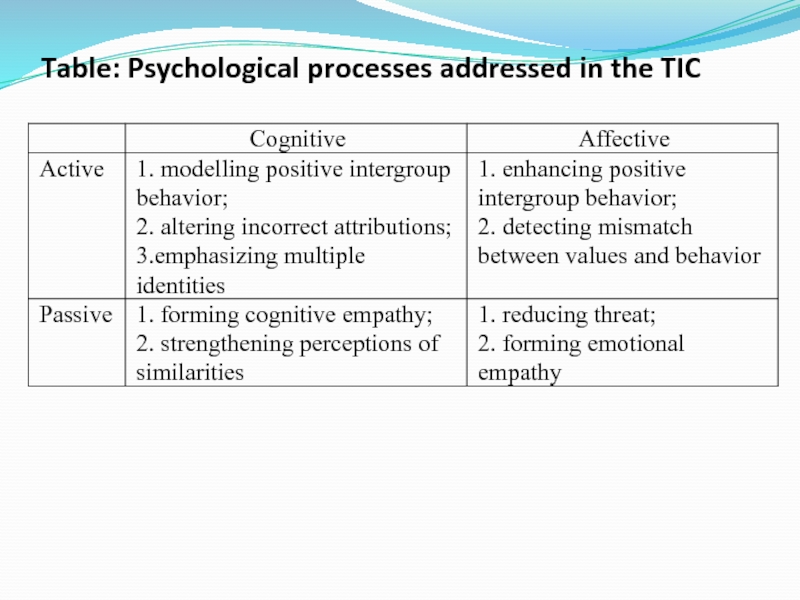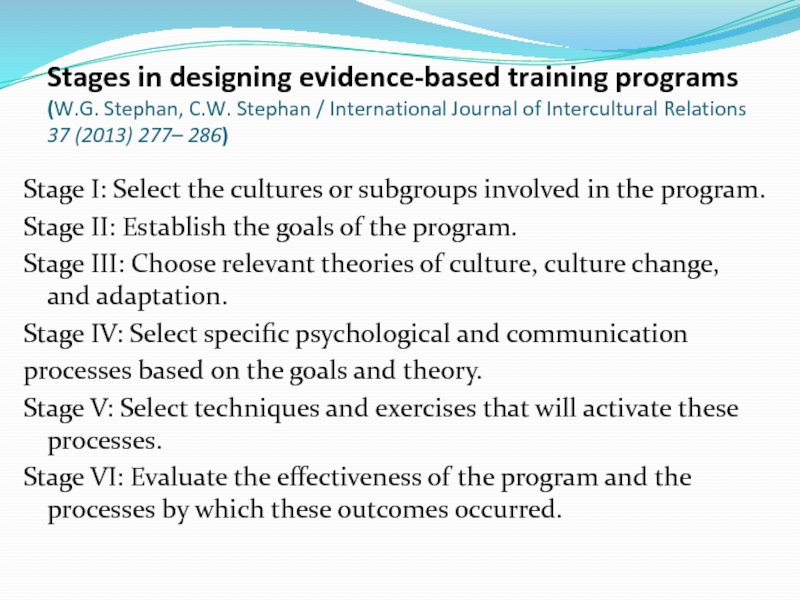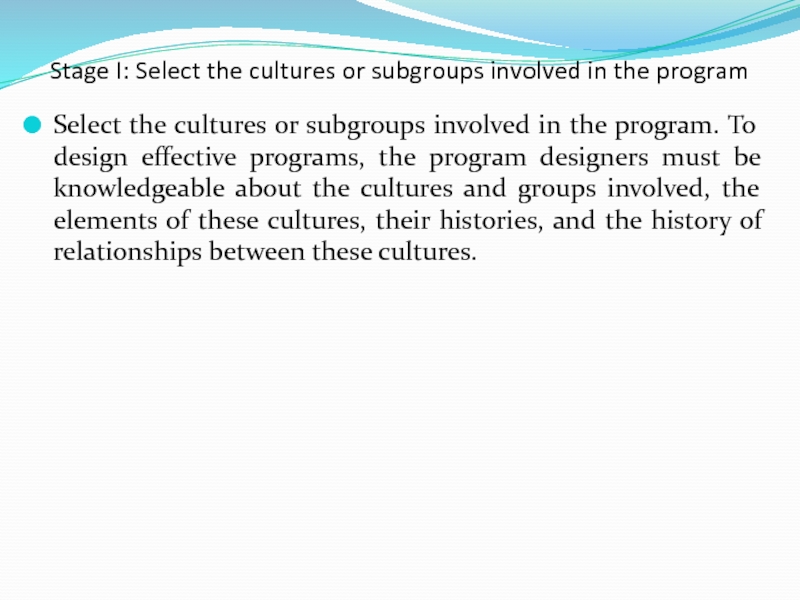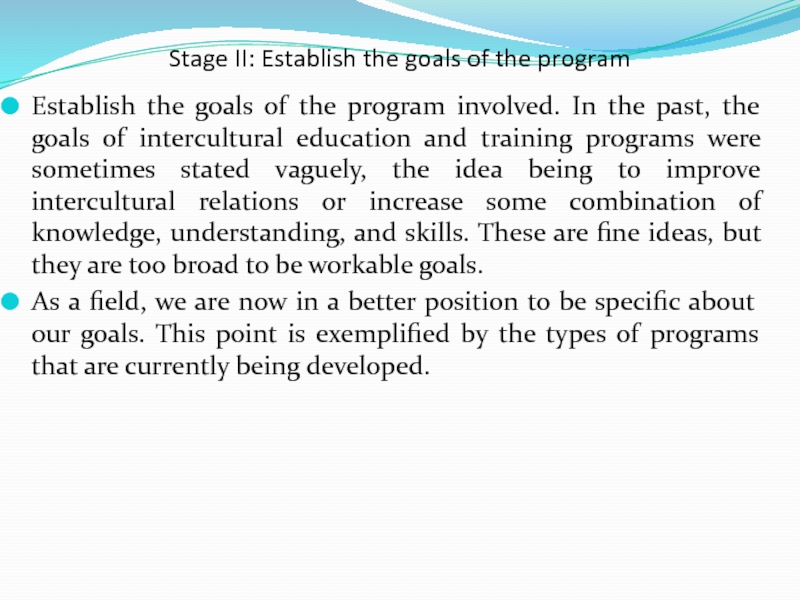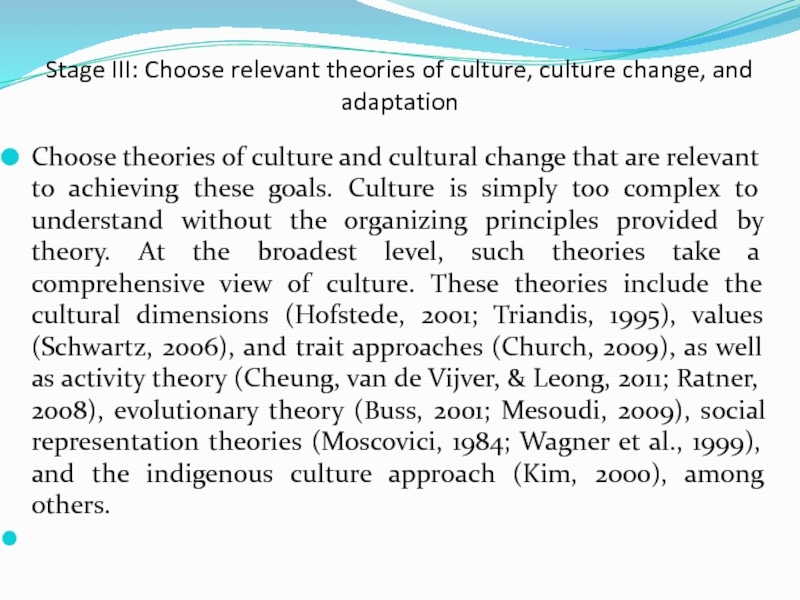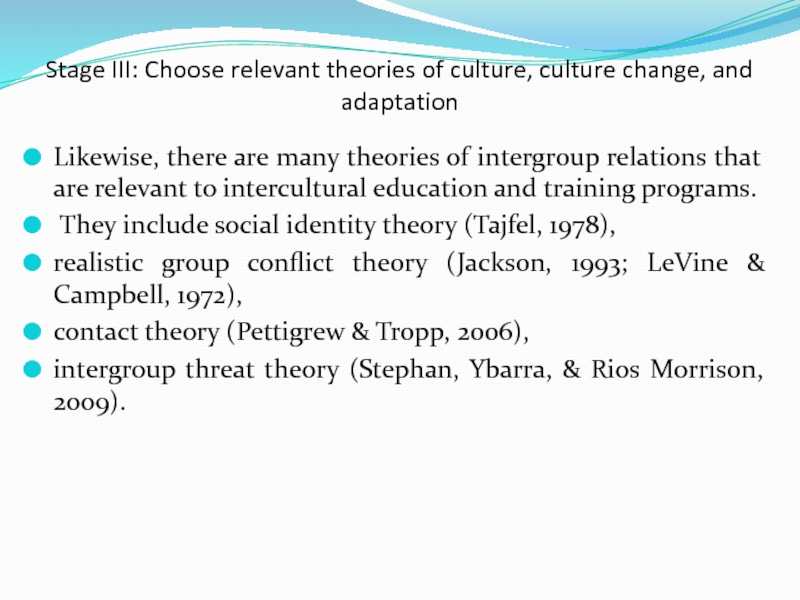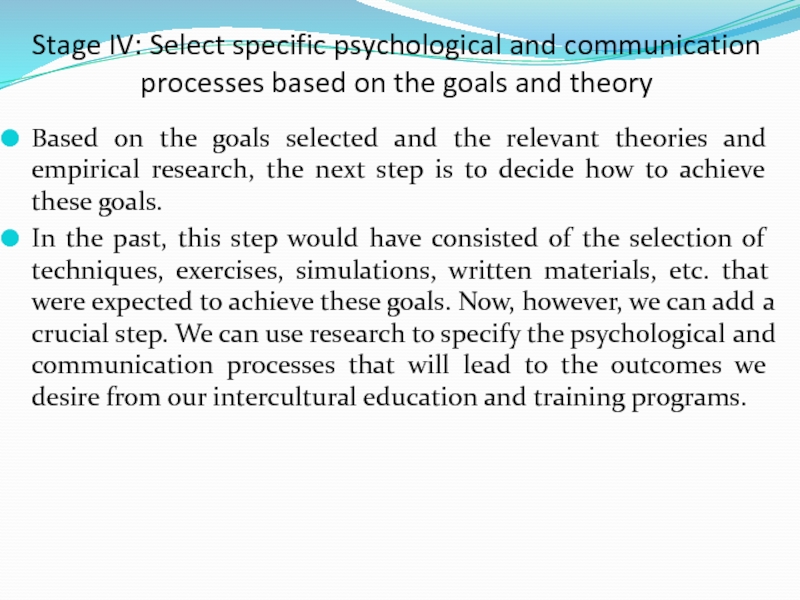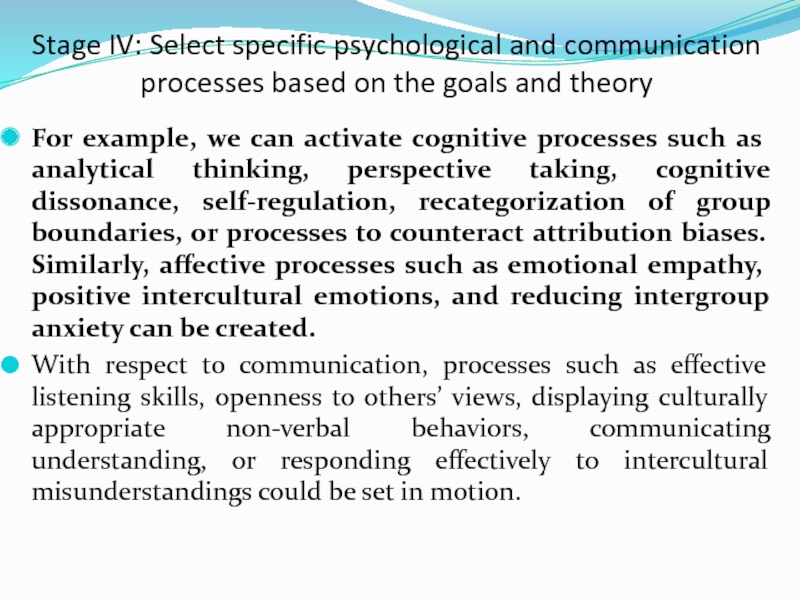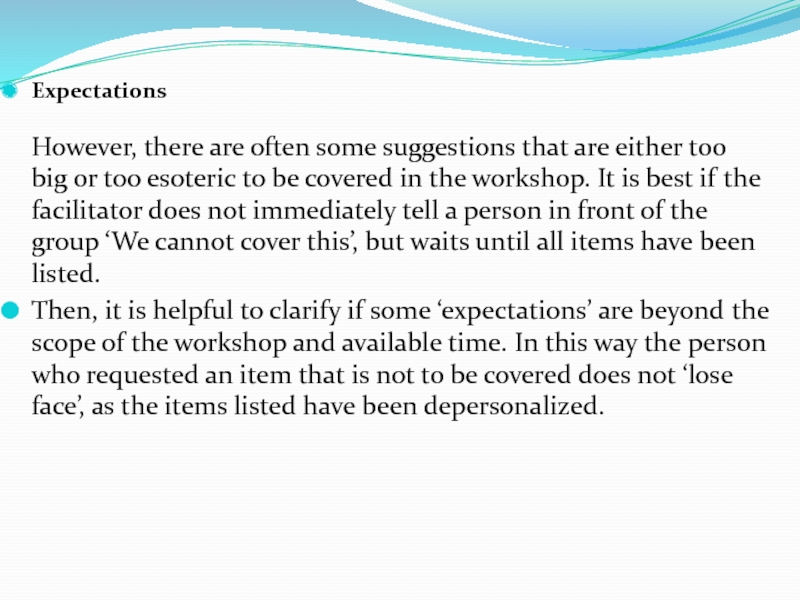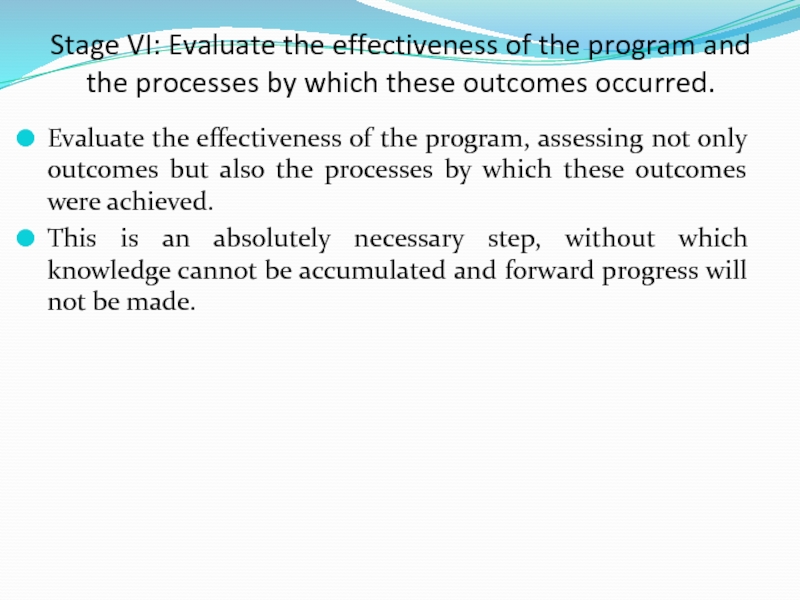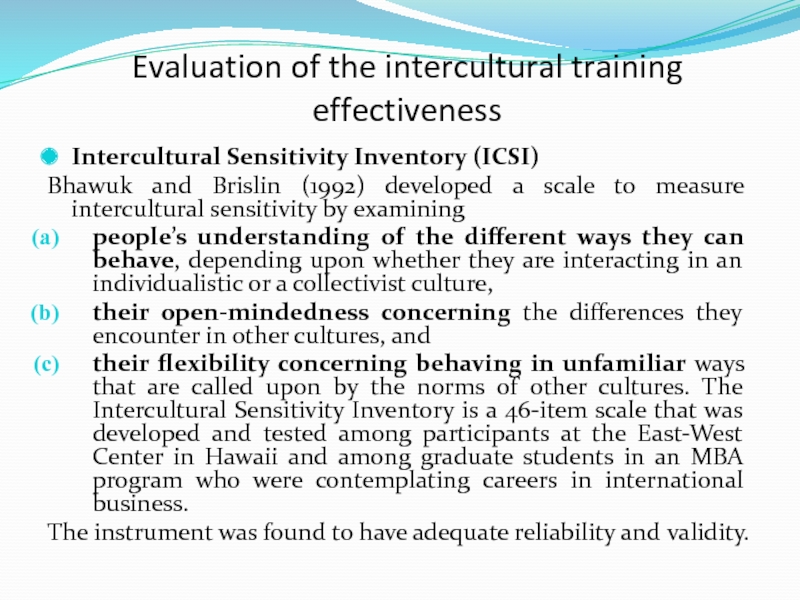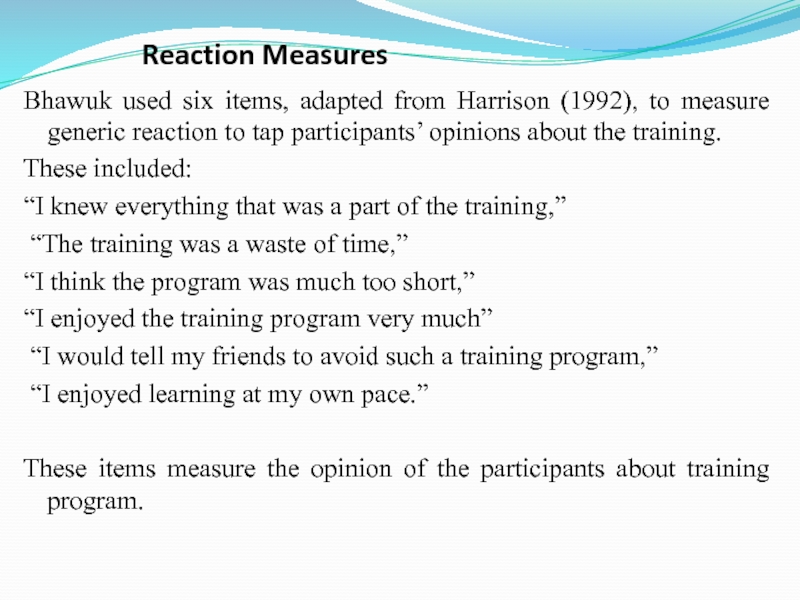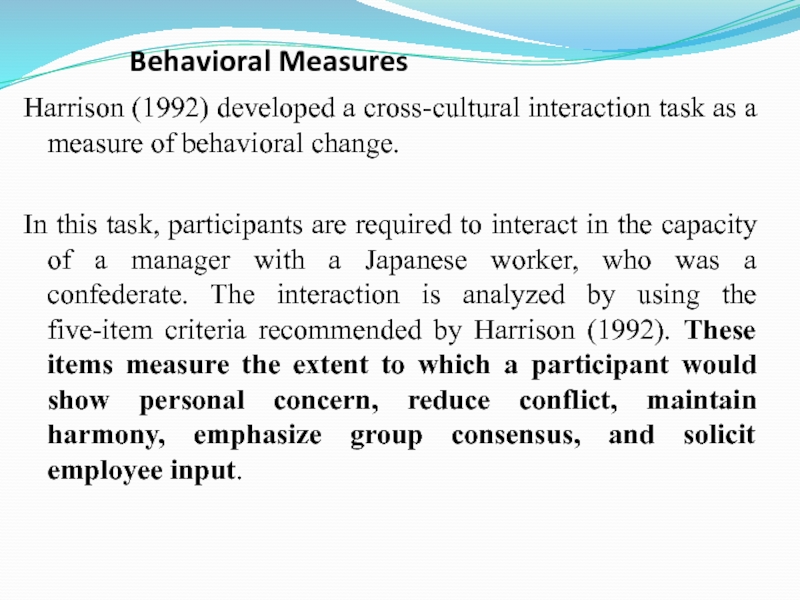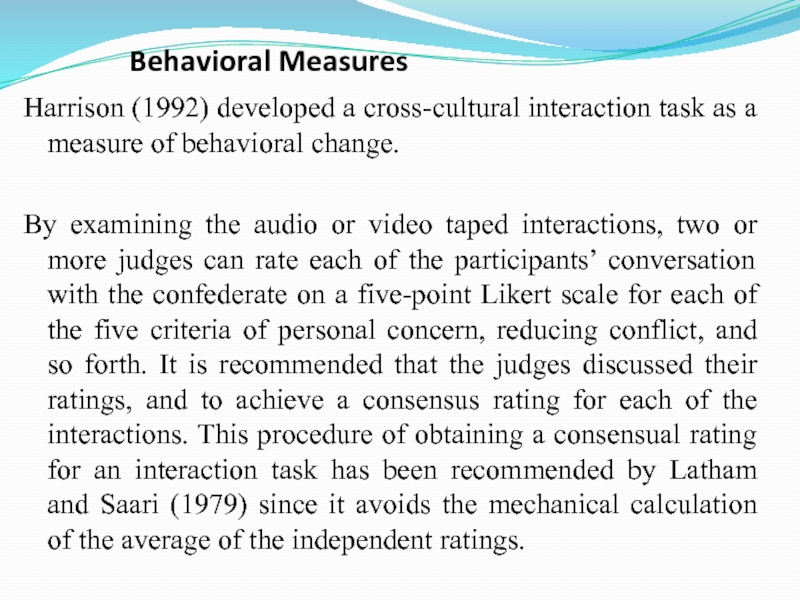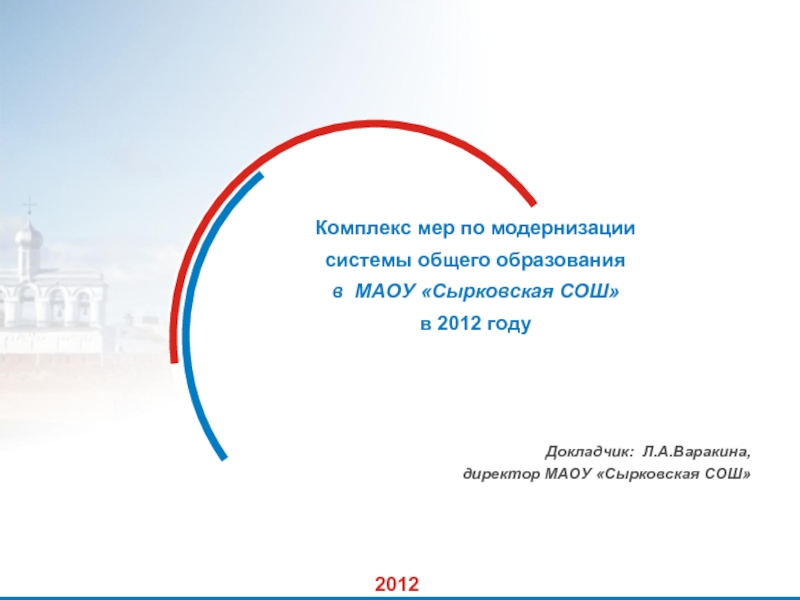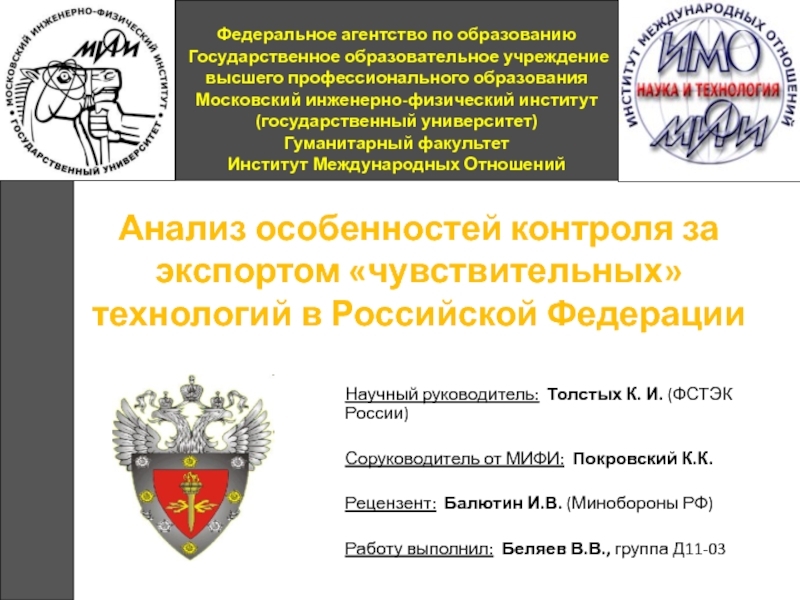- Главная
- Разное
- Дизайн
- Бизнес и предпринимательство
- Аналитика
- Образование
- Развлечения
- Красота и здоровье
- Финансы
- Государство
- Путешествия
- Спорт
- Недвижимость
- Армия
- Графика
- Культурология
- Еда и кулинария
- Лингвистика
- Английский язык
- Астрономия
- Алгебра
- Биология
- География
- Детские презентации
- Информатика
- История
- Литература
- Маркетинг
- Математика
- Медицина
- Менеджмент
- Музыка
- МХК
- Немецкий язык
- ОБЖ
- Обществознание
- Окружающий мир
- Педагогика
- Русский язык
- Технология
- Физика
- Философия
- Химия
- Шаблоны, картинки для презентаций
- Экология
- Экономика
- Юриспруденция
Intercultural training презентация
Содержание
- 1. Intercultural training
- 2. The cross-cultural interactions in working places are
- 3. Unsuccessful cross-cultural interactions become even more
- 4. For a firm that has hundreds
- 5. How can we improve intercultural skills? Gudykunst
- 6. Cross-cultural training Brislin and
- 7. Cross-Cultural Training Cultural training programs should include:
- 8. Cross-Cultural Training Additional forms of training include:
- 9. Dynamics of adjustment (1) Ethnocentric phase
- 10. Ethnocentric phase: pre-departure training and post-arrival training.
- 11. Pre-departure training During the ethnocentric phase, the
- 12. Pre-departure training Trainees are rarely able to
- 13. Training in the ethnocentric phase - post-arrival
- 14. Training in the ethnocentric phase - post-arrival
- 15. Training in the ethnocentric phase - post-arrival
- 16. Training in the culture-shocked phase During the
- 17. Training in the conformist phase The conformist
- 18. Training in the conformist phase The interactional
- 19. The effectiveness of multicultural training in
- 20. Training of Intercultural Competence (TIC) According
- 21. Table: Psychological processes addressed in the TIC
- 22. Stages in designing evidence-based training programs (W.G.
- 23. Stage I: Select the cultures or subgroups
- 24. Stage II: Establish the goals of the
- 25. Stage II: Establish the goals of the
- 26. Stage III: Choose relevant theories of culture,
- 27. Stage III: Choose relevant theories of culture,
- 28. Stage IV: Select specific psychological and communication
- 29. Stage IV: Select specific psychological and communication
- 30. Stage V: Select techniques and exercises that
- 31. Stage V: Select techniques and exercises that
- 32. Expectations Ask participants in pairs to interview
- 33. Expectations However, there are often some
- 34. Stage VI: Evaluate the effectiveness of the
- 35. Evaluation of the intercultural training effectiveness Intercultural
- 36. Reaction Measures Bhawuk used six items, adapted
- 37. Behavioral Measures Harrison (1992) developed a cross-cultural
- 38. Behavioral Measures Harrison (1992) developed a cross-cultural
- 39. Objective questions - What do you
- 40. Reflective (feeling) questions - What did
- 41. Decision questions -What did you
- 42. Decision questions - What will you
- 43. Thank you!
Слайд 2The cross-cultural interactions in working places are not always successful.
For
and
as high as 50 percent of those who do not return early function at a low level of effectiveness (Copeland & Griggs, 1985).
Слайд 3
Unsuccessful cross-cultural interactions become even more important when the costs of
For example, studies have estimated that the cost of a failed expatriate assignment is an amount from $50,000 to $150,000 (Copeland & Griggs, 1985).
Слайд 4
For a firm that has hundreds of expatriate employees worldwide, such
In fact, Copeland and Griggs (1985) have estimated that the direct costs to U.S. firms of failed expatriate assignments is over $2 billion a year, and this does not include unmeasured losses such as damaged corporate reputations or lost business opportunities.
Слайд 5How can we improve intercultural skills? Gudykunst (1998)
Minimize anxiety. Knowledge reduces
Watch different perspectives: perception explains behaviour
Their interests: watch for differences: seek similarities: interpret what are their interests
Categories: we need finer distinctions: over-simplification is root of false stereotyping
+intercultural competence
Слайд 6
Cross-cultural training
Brislin and Yoshida (1993) define cross-cultural training as formal
cross-cultural training facilitates more effective cross-cultural interactions.
Слайд 7Cross-Cultural Training
Cultural training programs should include:
culture-specific information
general cultural information on values,
self-specific information that identifies one’s own cultural paradigm
Слайд 8Cross-Cultural Training
Additional forms of training include:
mentoring
interactions, games
cultural assimilator programs, in which
Слайд 9Dynamics of adjustment
(1) Ethnocentric phase
(2) Culture-shocked phase
(3) Conformist phase
(4) Adjusted phase
Selmer,
Слайд 11Pre-departure training
During the ethnocentric phase, the psychological predisposition of individuals restricts
Слайд 12Pre-departure training
Trainees are rarely able to grasp in abstraction and recall
Pre-departure programmes could focus instead on essential information on local conditions.
Training material should include didactic exposure to the cross-cultural adjustment process, underlining the normal and constructive phases that emerge after the initial strains of culture shock.
Слайд 13Training in the ethnocentric phase - post-arrival training
Upon arrival in the
If encouraged to take time off to participate in post-arrival training, the trainees themselves would suggest many of the concerns to be discussed.
Слайд 14Training in the ethnocentric phase - post-arrival training
Training immediately after arrival
Culture-contrast methods would be the most appropriate to highlight similarities and differences in the fundamental values and characteristics of home and host cultures (cf. Stewart and Bennett, 1991; Althen, 1988).
Слайд 15Training in the ethnocentric phase - post-arrival training
Learning is likely to
Слайд 16Training in the culture-shocked phase
During the culture-shocked phase, cross-cultural training would
The training during this period should facilitate cognitive restructuring by providing explanations of actual cross-cultural experiences.
Exercises should elicit experimentation with new behaviours which could develop into interpersonally effective performance on the job.
Слайд 17Training in the conformist phase
The conformist phase is another suitable period
Culturally sensitive skills would be efficiently learnt by actual practice on the job, which in turn would provide trainees with objective reactions from significant others.
Слайд 18Training in the conformist phase
The interactional mode of learning occurs through
Long-term effects of training at the conformist phase are probable, due to the immediacy of application. The immediate transfer of learning to practice reinforces the behavioural skills, such that cross-cultural competencies are quickly incorporated in the personal repertoire of conduct (Sorcher and Spence’s, 1982).
Слайд 19
The effectiveness of multicultural training in general is proven. A good
J. Stewart Black and Mark Mendenhall. «Cross-Cultural Training Effectiveness: A Review and a Theoretical Framework for Future Research» / The Academy of Management Review, Vol. 15, No. 1 (Jan., 1990), pp. 113-136.
Слайд 20Training of Intercultural Competence (TIC)
According to Stephan and Stephan (2001),
(i) active versus passive processes and
(ii) affective versus cognitive processes
These two dimensions were adapted in the TIC in order to classify the psychological processes addressed by the training (see Table).
Слайд 22Stages in designing evidence-based training programs (W.G. Stephan, C.W. Stephan /
Stage I: Select the cultures or subgroups involved in the program.
Stage II: Establish the goals of the program.
Stage III: Choose relevant theories of culture, culture change, and adaptation.
Stage IV: Select specific psychological and communication
processes based on the goals and theory.
Stage V: Select techniques and exercises that will activate these processes.
Stage VI: Evaluate the effectiveness of the program and the processes by which these outcomes occurred.
Слайд 23Stage I: Select the cultures or subgroups involved in the program
Select
Слайд 24Stage II: Establish the goals of the program
Establish the goals of
As a field, we are now in a better position to be specific about our goals. This point is exemplified by the types of programs that are currently being developed.
Слайд 25Stage II: Establish the goals of the program
As a field, we
For example, programs are now designed to promote co-existence, immigrant /resident relations, conflict resolution, reconciliation, social justice, and intergroup peace. Intercultural education and training programs also have been developed that have even more narrowly defined goals such as increasing empathy, reducing intergroup anxiety, reducing stereotypes and prejudice, and improving non-verbal communication skills.
Слайд 26Stage III: Choose relevant theories of culture, culture change, and adaptation
Choose
Слайд 27Stage III: Choose relevant theories of culture, culture change, and adaptation
Likewise,
They include social identity theory (Tajfel, 1978),
realistic group conflict theory (Jackson, 1993; LeVine & Campbell, 1972),
contact theory (Pettigrew & Tropp, 2006),
intergroup threat theory (Stephan, Ybarra, & Rios Morrison, 2009).
Слайд 28Stage IV: Select specific psychological and communication processes based on the
Based on the goals selected and the relevant theories and empirical research, the next step is to decide how to achieve these goals.
In the past, this step would have consisted of the selection of techniques, exercises, simulations, written materials, etc. that were expected to achieve these goals. Now, however, we can add a crucial step. We can use research to specify the psychological and communication processes that will lead to the outcomes we desire from our intercultural education and training programs.
Слайд 29Stage IV: Select specific psychological and communication processes based on the
For example, we can activate cognitive processes such as analytical thinking, perspective taking, cognitive dissonance, self-regulation, recategorization of group boundaries, or processes to counteract attribution biases. Similarly, affective processes such as emotional empathy, positive intercultural emotions, and reducing intergroup anxiety can be created.
With respect to communication, processes such as effective listening skills, openness to others’ views, displaying culturally appropriate non-verbal behaviors, communicating understanding, or responding effectively to intercultural misunderstandings could be set in motion.
Слайд 30Stage V: Select techniques and exercises that will activate these processes
With
Слайд 31Stage V: Select techniques and exercises that will activate these processes
If
Слайд 32Expectations Ask participants in pairs to interview one another by asking each
Слайд 33Expectations However, there are often some suggestions that are either too big or
Then, it is helpful to clarify if some ‘expectations’ are beyond the scope of the workshop and available time. In this way the person who requested an item that is not to be covered does not ‘lose face’, as the items listed have been depersonalized.
Слайд 34Stage VI: Evaluate the effectiveness of the program and the processes
Evaluate the effectiveness of the program, assessing not only outcomes but also the processes by which these outcomes were achieved.
This is an absolutely necessary step, without which knowledge cannot be accumulated and forward progress will not be made.
Слайд 35Evaluation of the intercultural training effectiveness
Intercultural Sensitivity Inventory (ICSI)
Bhawuk and Brislin
people’s understanding of the different ways they can behave, depending upon whether they are interacting in an individualistic or a collectivist culture,
their open-mindedness concerning the differences they encounter in other cultures, and
their flexibility concerning behaving in unfamiliar ways that are called upon by the norms of other cultures. The Intercultural Sensitivity Inventory is a 46-item scale that was developed and tested among participants at the East-West Center in Hawaii and among graduate students in an MBA program who were contemplating careers in international business.
The instrument was found to have adequate reliability and validity.
Слайд 36Reaction Measures
Bhawuk used six items, adapted from Harrison (1992), to measure
These included:
“I knew everything that was a part of the training,”
“The training was a waste of time,”
“I think the program was much too short,”
“I enjoyed the training program very much”
“I would tell my friends to avoid such a training program,”
“I enjoyed learning at my own pace.”
These items measure the opinion of the participants about training program.
Слайд 37Behavioral Measures
Harrison (1992) developed a cross-cultural interaction task as a measure
In this task, participants are required to interact in the capacity of a manager with a Japanese worker, who was a confederate. The interaction is analyzed by using the five-item criteria recommended by Harrison (1992). These items measure the extent to which a participant would show personal concern, reduce conflict, maintain harmony, emphasize group consensus, and solicit employee input.
Слайд 38Behavioral Measures
Harrison (1992) developed a cross-cultural interaction task as a measure
By examining the audio or video taped interactions, two or more judges can rate each of the participants’ conversation with the confederate on a five-point Likert scale for each of the five criteria of personal concern, reducing conflict, and so forth. It is recommended that the judges discussed their ratings, and to achieve a consensus rating for each of the interactions. This procedure of obtaining a consensual rating for an interaction task has been recommended by Latham and Saari (1979) since it avoids the mechanical calculation of the average of the independent ratings.
Слайд 39Objective questions
- What do you remember from yesterday: key scenes, events,
- Which parts were unclear?

